Top Tips for Daily Language Learning



Issue 30January 2019 La protection de la langue française p.8 Natale al sud p.13
p.6 48 Hours in Stockholm p.7
Chair
Emily Darby
Secretary
Imogen Burgoyne
Treasurer
Charlotte Lau
Social & Publicity
Kirsten Kitchener
Creative Designer
Fiona Milena
Kozlowska
Proof-Readers
Shade
Owomoyela
& Kate Ezard
Current Affairs
Michael Curzon
Travel
Megan Nicholls
Culture
Maria Allon
Food & Drink
Flick Hemming
Life & Style
Alex Jo Brown
French
Holly Hunt
Spanish
Rebekah
Quixano
Henriques
German
Lily King
Italian
Flick Hemming
Catalan
Cecilia Hallpike
Russian
Robert Miller
Chinese
Charlotte Lau
Portuguese
Isabel Baldwin
Dear Readers,
I hope you had a fabulous and festive time over the Christmas break, and let me wish you a very happy 2019 on behalf of everyone from the Linguist team. We hope your year is full of joy, success and more importantly lots of reading!
With that smooth segway, let me introduce you to Issue 30, the first issue of the Linguist to be published in 2019. Ah, yes, 2019, the year of Brexit...But, deal or no deal, at least we know how to moan about it in many di ff erent languages to our European and international compatriots. Okay, enough of the B word, on with the issue!
Have you ever wondered how Italy came to have such a widespread coffee-drinking culture, where you can consume all the piping hot ca ff eine you need in one shot?
Discover how the espresso became such a staple of Italy’s coffee drinking culture in our Italian section this issue, and who knows, maybe you’ll be inspired to try one on your next caffeine-induced study session!
Meanwhile, you’re probably sick of hearing the expression ‘fake news’ by now, but you might be surprised to hear that France is even more sick of
theuoblinguist.co.uk


Front Cover Photo: Aix-en-Provence, France
Emily Darby
Featured Photos:
1. Sri Lanka Voluenteering, Charlotte Griffin
2. 48 Hours in Stockholm, Zoe Lumsden
3. Natale al sud, Leni Durante
1
it. A Commission set up to preserve the French language recently came up with several expressions to replace the English phrase, with their options including ‘infox’, ‘information fallacieuse’ and ‘ nouvelle fausse’. While we doubt these are going to catch on fast, it does prove that France wins the prize of being the most stubbornly protective of their native tongue. Find out more about why France is unique in its persistent pride in their language in our French section article ‘La protection de la langue française’.
If you head over to the Spanish section you can immerse yourself in some more linguistic talking points, as we delve into the subtle di ff erences between español and castellano, or you can find out more about what learning a language entails in the Life and Style section! Or why not be guided around 48 hours in Stockholm in our Travel section where you can also hear about our writer’s life-changing experience volunteering in Sri Lanka! I hope you’re just as excited as I am about reading this issue and reading the fabulous articles I’ve mentioned and many more! I’ll let you get on with reading now but first a big thank you again to all our writers, editors, proofreaders, designer, and committee team without whom this would not be possible!
I hope you have a fantastic 2019 and spend it with us in our upcoming issues!
Happy reading!
Emily, Chair of The Linguist
Issue 30 - January 2019
The Linguist Team 20182019
Emily Darby
Russian


Сочи - летняя столица России

Contact Us

If you would like to know more about the magazine, our writers or have comments you wish to share about the articles, then feel free to check out our Facebook, Twitter & Instagram pages or email us. We’re always looking for new writers and contributors, so don’t hesitate to get in touch!




Issue 30 - January 2019 theuoblinguist.co.uk
This Issue 2 3 Current Affairs A Ray of Hope for Those Keen to Learn in Mosul 4 Culture Sri Lanka Volunteering 5 Food & Drink Italy’s ‘Espressostrength’ Coffee Culture 6 Life & Style Top Tips for Daily Language Learning 7 Travel 48 Hours in Stockholm 8 French La protection de la langue française 9 German A Deutsche Wörter mit keiner Übersetzung & Die deutsche Trinkkultur 10 Spanish Cinco maneras de conocer la cultura hispánica desde casa & ¿Hablamos en castellano o español? 11 Catalan Tradicions Nadalenques Catalanes 12 Portuguese Os Açores: Um Paraíso Português 13 Italian Natale al sud 14 Chinese ⼈的距離
In
15
The UoB Linguist Magazine linguist@guild.bham.co.uk @UoBLinguist_Mag
@UoBLinguist_Mag
CURRENT AFFAIRS A Ray of Hope for Those Keen to Learn in Mosul
The Iraqi city of Mosul (among the largest in the country) had, by 2017, been under the control of the Islamic State (IS) since June 2014. During this period, IS wreaked havoc on the city; not least on its university’s library which the group adapted as its headquarters and which is the topic of this article. Mosul University, established in 1967 and considered, for a long time, to be among the best universities in Iraq and in the whole of the Middle East, had boasted eight colleges and a grand central library. The latter (as well as the former) was left by IS largely in ruins; its walls – and, perhaps more worryingly, its contents; i.e. books - were greatly damaged by fires and bombs. Indeed, some shocking photos of the destruction caused by the fighting in the area can be found on the internet (as can most things).
Robin Wright, a contributor for The New York Times, visited the library (which she pointed out had once held ‘a million books, historic maps, and old manuscripts’) in mid-2017, not long after IS had been forced out of the city, and described it as follows:
‘A block-long building, charred black and its shellstrewn, inside and out, with splintered glass, burnt beams, heat-warped furniture, toppled shelves, and mounds of ashes. In December, as the Iraqi Army pushed into Mosul, ISIS fighters had set the library alight. The books had served as kindling.’
The destruction of these remnants of the past, which are certainly necessary for ensuring we don’t repeat mistakes made by our forefathers, is among the many awful legacies left by the terror group. Furthermore, due to the severe level of damage caused by IS, the incredibly important task of rebuilding the library is an immense one.
Highlighting the veracity of this, Ms. Wright has commented that ‘it’s one thing to erect four walls to rebuild shattered homes; it’s another to re-create institutions.’
by Michael Curzon
Many have, thankfully, risen to the occasion. Locals and students alike have focussed their efforts on rebuilding what had stood before and, thanks in part to the help of various organisations from around the world, the number of books stocked by the library is continuously on the rise.
A campaign called the Mosul Book Bridge has worked to refill Mosul University Library’s shelves, pointing out that, because of the lack of texts there, ‘50,000 students and university staff are now unable to complete their research and academic projects’. Thousands of books have been sent over already; 3,000 were shipped earlier this year and a second shipment is currently being prepared. Whilst many more are needed, this is certainly a step in the right direction. On a broader level, it is also now the case that men and women are again studying alongside one another at the university; a fact we should celebrate. Further to this, Ali Y.Baroodi, an English instructor at the university, has ‘estimated that over 30,000 students are back to classes.’
Ashraf Riadh Al-Allaf, a senior lecturer in the university’s English department, has also commented that, due to the efforts of the aforementioned locals and organisations, ‘the culture of the university is slowly resurfacing’.
And so, out of this period of darkness (admittedly an understatement, if ever there was one), one can see a ray of hope in the fact such a focus is being placed on the continuation of higher education in Mosul. Indeed, education – bringing with it free thought, discussion and debate – is one of the greatest tools against hatred, stupidity and violence.
Issue 30 - January 2019 theuoblinguist.co.uk
3
CULTURE
Sri Lanka Volunteering
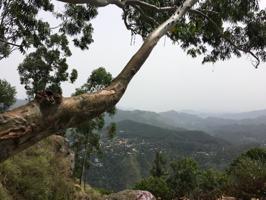
Earlier this year I was fortunate enough to take part in the advanced mental health programme run by SLV.Global. This consisted of five weeks of learning, service, and travel based in beautiful Sri Lanka. SLV.Global o ff ers psychology work experience for students struggling to find placements in the UK, while supporting Sri Lankan communities with scare mental health resources.
The focus of this placement is firmly on work, with a full itinerary crafted to include projects in a psychiatric hospital, an addiction clinic, a special educational needs day centre, and community schools to teach English. Sri Lanka has a desperately underfunded mental health system, with only 89 psychiatrists for the population of 21 million and only 1.6% of the total health budget being spent on mental health. Whilst on projects, you feel as though you’re making a real difference to the service users. Due to the understaffed facilities, something as simple as having a conversation with a patient and giving them some one-on-one interaction can really change their outlook. However, this is not to disparage the work of the local staff as they are doing the absolute best they can with the resources available. We are simply there as willing students to support the existing systems in the country. As much as I keep repeating to my family that I went to Sri Lanka to work, not to “swan around on holiday” (thanks, mum), I’d be lying if I said that travelling around this beautiful country each weekend wasn’t a highlight of the trip. The first weekend in the country is preplanned.
by Charlotte Griffin
Everyone from the intake will travel into the pristine rainforest for the “jungle weekend”. This involves a lot of team building activities such as white-water rafting and free jumping into the river. It’s a great way to bond with the people you’ll be working and living with throughout your project, and the stunning backdrop of one of the most beautiful rainforests in the world doesn’t hurt!
After the first, your weekends are yours to travel freely. I chose to spend one of my weekends in Ella, a quaint town in the Uva Province. With its high elevation and rural setting, Ella provides a much cooler and fresher atmosphere than Colombo and was a welcome break from the humidity. Despite being a small town, Ella boasts a great variety of bars and restaurants as well as a range of shops to buy unique gifts from. These are mostly there to serve the tourists that come for the spectacular views from the nearby hiking trails. I would highly recommend Little Adam’s peak to everyone who visits, a relatively easy hike compared to the nearby Ella Rock, or it’s much larger counterpart of Adam’s peak in Sabaragamuwa province. It provides breathtaking views over the surrounding valleys and tea plantations from the top as well as sporting a golden statue of Buddha and a shrine.
From improving my tolerance to spicy food to being taken saree shopping with a co-worker, I feel that this programme provided me with cultural immersion to an extent that I have never felt before while travelling. Sri Lanka has totally won me over and will always have a piece of my heart.
I enjoyed my time in Sri Lanka so much that I now represent SLV.Global as an ambassador to try and encourage others to have this lifechanging opportunity. If you’re interested in gaining hands-on psychology experience in a beautiful place, then please get in touch at ceg507@student.bham.ac.uk

Issue 30 - January 2019 theuoblinguist.co.uk
4
FOOD & DRINK
Italy’s ‘Espresso-strength’ Coffee Culture
by Grace Baxendine
Whether enjoyed in a café or at home, coffee for Italians is less of an act and more of an art. As a language student, this is perhaps one of the most obvious points of culture to comment on, but rightly so. If you want to avoid appearing a stereotypical caricature of ‘the foreigner’ when navigating Italy’s cafés, or even living amongst Italians, there are some incredibly di ff erent customs to observe, and, in some cases, obey. Although it may be prepared very differently, for Italians from all corners of the country, coffee is a shared passion. This was made obvious for me after a single day of living with Italians from opposite ends of the country – one from Puglia, (the boot toe) and another from Trento (practically Slovenia). Back home, I was borderline obsessed with coffee, however nothing could have prepared me for the coffee lessons and explanations that I’ve learnt, and I am still encountering daily. First lesson. Instant coffee is a cardinal sin. I understand how incredibly dramatic this may sound, but I cannot express the disgust on my new flatmates’ faces as I placed the only jar of instant coffee I could find in the local supermarket on the kitchen shelf.
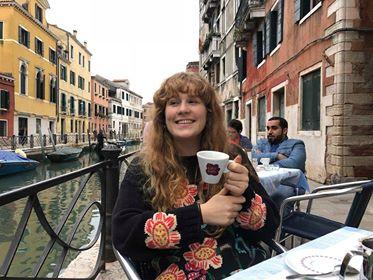

It is simply not used in Italy. The moka, however, is a household essential here, unlike the kettle and instant coffee combination we favour in the UK. My first few days in Italy taught me to use this fantastic contraption which creates the most wonderful, smooth, strong co ff ee. The powdered coffee used is no more expensive than instant and really does make for a much tastier drink! One thing is for sure: on my return to Birmingham next September, I will certainly be investing in a moka!
Drinking coffee when out is an altogether di ff erent matter. It of course di ff ers
considerably from the UK, but also from region to region. Padova, for instance, a forward thinking, ecocity complied of students, is a world away from a southern city like Napoli, or so I discovered visiting a friend there a few weeks ago. Unlike in Padova, coffee shops don’t really exist south of Rome, or at least not in the same way. There’s less sitting around for hours, chatting with a mug the size of a large Costa latte. It would be more apt to describe the process as walking into a bar, saying ‘’un caffè’’, stirring two large spoonsful of sugar for thirty seconds into your espresso cup before necking it and walking out. It seems more of a practical caffeine boost than a sociable habit. My Pugliese flatmate agrees with my observation, explaining the difference between Bari, in the deep south of Italy and Padova. Coffee doesn’t seem to be as much of a sit-down affair in the South as it is in the North. Undeniably, co ff ee is culturally very different here in Italy and to me it seems that we English are missing a trick! Let’s ditch the instant co ff ee and embrace the moka!
Issue 30 - January 2019 theuoblinguist.co.uk
5
LIFE & STYLE
Top Tips for Daily Language Learning
by Alex Jo Brown
Whether it makes up a part of your degree course, you’re learning to gain an extra skill or even if you’re just doing it for fun, learning a language can be a rewarding process. But let’s be honest - pouring over a grammar book for hours on end can be frustrating!
I’m a firm believer in the adage ‘little but often’, and I really do think that it’s an attitude that should be applied to language learning. Be it vocabulary, comprehension or speaking skills, slowly the work builds up, and you start to see a difference in your overall level!
So, here are 4 realistic habits to develop to incorporate language acquisition into your daily routine. You might be surprised by the difference it makes!
1)A word a day keeps the examiners at bay!
Small, manageable habits are a realistic way to make progress with your language. There’s only really one way to learn vocabulary; and that’s to look at words, and remember them! It’s easy to make this an everyday activity if you set yourself the task of learning one new word per day. Choose a time, say, after you’ve brushed your teeth in the morning but before you step out of the door, to look up a new word. Try following a twitter account dedicated to posting a new word in a certain language everyday (they do exist!). Concentrate on your new word for a minute or two, and then crack on with your day. Once more, before bed, test yourself again. Hey, presto! That’s 7 new words by Sunday.
2)Make the most of your commute.
Most of us take the time we spend getting from one place to another for granted, which makes it the perfect time to get ahead with your language of choice! On the bus or train, rather than scrolling through
Instagram for the fourteenth time that day, revise some vocabulary on an app like Quizlet. If you usually walk or drive to get where you’re going, and can’t do with the visual distraction, give podcasts in your native language a go, so you can listen on your journey in.
3)Watch TV
Yes, you heard me! In fact, indulge in whatever you like: Netflix series, films, podcasts, even youtube videos. But -and you probably knew this was coming- it needs to be in your target language. Even if that means you need subtitles, it really is worth getting into this habit. Exposing yourself to a language in this way not only helps the learning process become enjoyable, but it may also make you a little more aware of a culture that uses that language; if nothing else, you’ll have a conversation starter when you get a chance to practice with native speakers! So instead of watching I’m a Celeb while you eat your dinner, why not give the first episode of Chicas del cable a chance?
4)Take advantage of the humble sticky note.
Whilst this particular piece of advice may give you some flashbacks to your highschool years, it doesn’t make it any less useful! Try labelling all of the mundane objects around the house in your target language. But don’t stop there - rather than sticking to the basic stuff, like labelling the fridge as le réfrigérateur, try to put a variety of useful words in spaces that relate to those concepts. For example, put the words for cold, ice, freeze, and various foodstuffs there too. Be creative with your post-its in a way that makes sense to you. The smallest things can make the biggest di ff erence in the long run!
Issue 30 - January 2019
theuoblinguist.co.uk
6
TRAVEL
48 Hours in Stockholm
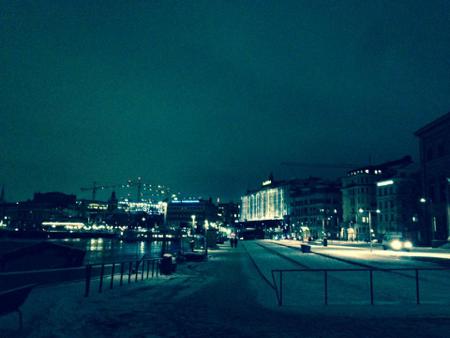

Frosty winter weather is well and truly here but despite chilly temperatures, winter can still be one of the most magical times of year to travel. Here’s a look at Sweden’s charming capital, Stockholm, for some Scandinavian winter explorations… This delightful port city is all about the water. The city is made up of 14 islands, mostly interconnected with bridges. Each island holds a district of the city with unique character and charm. Take some time to walk by the docks of the islands and take in the atmosphere where both huge cruise ships and smaller sail boats set out on adventures.
by Zoe Lumsden
patterns enhance the artistic feel in this creative city. After exploring in chilly temperatures there’s no doubt it’s time for a warm tea or coffee. Head to Stockholm’s Södermalm district for the cosiest tea and coffee spots and warm sweet treats. Here you can also find vinyl and vintage shops and Stockholm’s famous bright pink bicycle. Despite freezing temperatures, snow lining the docks, and glistening ice freezing the surrounding water, Stockholm remains a welcoming spot for travellers and is somewhere where winter only enhances the city’s atmosphere and where there’s always a warm café just round the corner to take respite from icy weather.
A couple of winter travel tips…
➡Don’t rely entirely on your phone for navigation; phone batteries often die in minus temperatures meaning no access to GoogleMaps. Use a paper map - aside from having less dependence on your phone, using a physical map requires you to pay closer attention to your surroundings and very quickly you’ll be able to create a sense of the layout of the city you’re visiting in your own head anyway, giving you more independence with your sense of direction.
➡Gloves – essential item(!) – don’t risk venturing out into the cold without these.
➡Lip balm – icy winds pick up in the cities and can be bitterly cold – your lip balm is an essential for frosty city streets.
The ports of this city have a rich heritage. The Vasa Museum is a must-see for any visitor to Stockholm, telling the fascinating story of the Vasa ship which capsized and sank at the start of its maiden voyage from Stockholm harbour in 1628. Hundreds of years later, the immense warship was recovered from the sea bed. Today the Vasa is the only preserved 17th century ship in the world. It’s astonishing to think that if the Vasa had only set sail successfully, the Vasa Museum and the story of this ship might not even be in Stockholm today.
Stockholm can be explored fairly easily by foot, however the metro network Stockholm Tunnelbana (literally ‘tunnel rail’) is well worth using not least for a look at the extensive display of artwork in the stations. The paintings, graphics, and mosaics on the walls of the stations are works from over 150 artists. Bold designs and intricate
➡Layer up! Thermals, t-shirts, jumper/fleece, coat (ideally windproof/waterproof). Prepare for the cold, stay warm and explore for longer!
Issue 30 - January 2019 theuoblinguist.co.uk
7
Reflections over an icy sea
Wintery views at night in the city
FRANÇAIS La protection de la langue française
de Megan Nicholls

Chaque jour, dans les actualités, nous pouvons lire qu’il y a de plus en plus de mesures protectionnistes, c’est-à-dire que certains pays empêchent le libreéchange et que les communautés deviennent plus hostiles envers les autres. La langue nationale fait partie de la culture unique d’un pays, donc une question se pose; peut-on s’adapter à la société moderne ou doit-on préserver la culture et la langue du pays ?
Plus de vingt ans après l’introduction de la « Loi Toubon » en France, le débat politique persiste. La loi été créée par le ministre de culture Jacques Toubon en 1994 pour renforcer l’utilisation de la langue française et protéger le patrimoine linguistique française. Par exemple pour la plupart des chaines de radio, il y a un taux minimum de 40 % de chansons francophones et 20 % de nouveautés ou artistes émergents. De plus l’Académie française a été créé en 1635 pour empêcher l‘anglicisation de la langue française. « La langue française est notre trésor, sachons le préserver. » Jean Dutourd de l’Académie française, ancien président de DLF (Défense de la langue française).
Il y a aussi la Délégation générale à la langue française et aux langues de France pour créer des alternatives au nouveaux mots anglais. Ces mots sont souvent des expressions technologiques donc les traductions sont difficiles, car le monde se développe très rapidement.
parlée et les mots qui sont utilisés dans notre vie quotidienne. Si on essaye d’arrêter l’utilisation de certains mots, ils deviendront plus attrayants et presque clandestins. Les jeunes veulent utiliser des mots plus modernes, donc le changement de la langue est inévitable. Les expressions françaises compliquées ne sont pas souvent pratiquées dans la vie moderne, où nous communiquons sur une échelle multinationale, donc la simplicité et la compréhension sont fondamentales.
Des exemples des mots empruntés
« Cloud computing » = l’informatique en nuage
« Crowd funding » = le financement participatif
« Email » = le courriel électronique
« Fake news » = les contrevérités
« Hashtag » = le mot-dièse
« High tech » = la haute technologie
« Rooftop » = Un toit en terrasse
« Self-service » = le libreservice
« Smartphone » = un mobile multifonction
« Wellness » = le bien-être
Sans doutes, il existe beaucoup de mesures bureaucratiques et juridiques pour éviter « le franglais » et protéger la langue française traditionnelle, surtout dans les publications o ffi cielles et la sphère publique. Cependant c’est plus difficile de contrôler la langue
L’anglais est utilisé autour du monde et est devenue la première langue mondiale, avec des expressions les plus répandues. Le défi est que la plupart des langues sont déjà un mélange des cultures et c’est normal d’emprunter des mots étrangers dans une langue. (En anglais on a yoga, yoghurt, sofa, pyjamas, déjà-vu, schadenfreude etc.) On ne peut pas sous-estimer l’influence d’internet et de la mondialisation, qui ont un gros impact sur beaucoup de cultures, car nous sommes devenus plus intégrés et interconnectés. D’un côté, la croissance des grandes entreprises multinationales a développé beaucoup de puissance dans le monde occidental, en particulier l’« anglais américain ». D’un autre côté, les consommateurs ont tendance à donner plus de valeur aux produits locaux, qui sont traditionnels et authentiques. Quelle est la solution ? A mon avis il faudrait trouver une balance entre la protection de la langue et accepter les changements inévitables. Il faudrait que nous adaptions notre monde en évolution, car les cultures statiques ne survivront pas.
Soyons fier de notre langue tout en appréciant les autres.
theuoblinguist.co.uk
8
DEUTSCH
Deutsche Wörter mit keiner Übersetzung von Megan Nicholls
Fast jeder, der Deutsch lernt, weiß wie kompliziert die Sprache sein kann. Es folgen zehn deutsche Wörter, die keine englische Übersetzung haben, aber ich bin überzeugt, dass wir sie öfter in anderer Sprache benutzen sollten!
i.Der Dornröschenschlaf; ein sehr tiefer Schlaf, der mit dem der Märchenprinzessin verglichen wird. Nicht unbedingt glücklich bis ans Ende, aber jeder fühlt sich besser nach einer guten Erholung.
ii.Das Fernweh; ein starkes Gefühl, vergleichbar mit physischen Schmerz, dass man verreisen muss. Die Verlockung ein spannendes fremdes Land zu besuchen reizt uns alle manchmal.

iii.Der Futterneid; die furchtbare Lage, wenn jemand besseres Essen bestellt. Man sitzt sehr eifersüchtig in dem Restaurant, weil die Wahl eines anderen viel leckerer aussieht.
iv.Der Glückspilz; jemand, der sehr erfolgreich und glücklich ist. Es geht einen auf die Nerven, aber man muss froh für die Person sein, denn wir alle kennen einen Menschen, der irgendwie sein Leben ohne Probleme oder Pech führt.
v.Die Götterspeise; buchstäblich das Essen des Gottes, da es so lecker schmeckt! Es wird auch Wackelpudding genannt, wobei der grüne Waldmeister Geschmack sehr beliebt in Deutschland
ist.
vi.Der Ohrwurm; ein nerviges, eingängiges Lied, dass tagelang im Kopf bleibt. Man kann sich ein kleines Insekt vorstellen und es summt bis man neue Musik hört.
vii.Die Torschlusspanik; buchstäblich bedeutet es, dass man Angst von einer geschlossenen Tür hat. Heutzutage haben wir Stress und eine Midlife-Krise wegen verpassten Möglichkeiten, Alterung, oder mangelnde Lebenspläne.
viii.Die Vergangenheitsbewältigung; beschreibt den Prozess irgendwie mit der Geschichte zurechtzukommen. Dieses Wort wird besonders für den Prozess in Deutschland nach dem 2. Weltkrieg beschrieben.
ix.Verschlimmbessern; wenn man versucht einen Probleme zu lösen, aber die Bemühung tatsächlich alles schlechter als vorher macht!
x.Der Weltschmerz; ein Gefühl von Melancholie und Trübsinn. Man ist pessimistisch und weiß nicht wie alles besser sein könnte.
Ich schlage vor, wenn Sie Weltschmerz, Torschlusspanik oder Fernweh haben, dass Sie sich eine riesige Schüssel Götterspeise, einen glücklichen Ohrwurm oder einfach einen Dornröschenschlaf gönnen, um alles zu vergessen!
Vor ein Paar Monaten wurde das Oktoberfest heftig gefeiert und es wurde ein neuer Rekord erreicht. In der Bayerischen Landeshauptstadt besuchten 6,2 Millionen Bierfans 16 Bierzelte mit etwa 100.000 Sitzplätzen. Insgesamt wurden über 8 Millionen Liter Bier getrunken, was einen Anstieg gegenüber 7,5 Millionen letztes Jahr.
Deutschland ist wie Großbritannien für seine Trinkkultur bekannt. Falls Sie sich jetzt die Frage stellen, wer zwischen Deutschland und Großbritannien durchschnittlich am meisten trinkt (vor allem unter den Jugendlichen), wäre Deutschland die Antwort. Deutschen sind schließlich nicht umsonst die Erfinder des Bieres!
Eine aktuelle Studie von der Online-Zeitung
YouGov hat gezeigt, dass 35% der Deutschen zwischen 18 und 24 Jahren Bier trinken, um sich zu betrinken, während es nur ungefähr 30% der Briten tun. In der Tat ist es ab dem Alter von 16 Jahren (das deutsches gesetzliches Mindestalter) nicht ungewöhnlich regelmäßig ein Bier, egal zu welcher Uhrzeit, zu trinken. Ab 9 Uhr
morgens kann man in Deutschland schon Leute sehen, die sich ein Liter Bier in einer Kneipe bestellen. Es ist gewissermaßen so tief in der deutschen Kultur verankert, dass wir Ausdrücke wie "das ist nicht dein Bier“ (es bedeutet, dass etwas nicht jemandes Sache ist) eingeführt haben. Aus diesem Grund sind deutsche Biere sehr berühmt, und wir können alle ein Paar nennen, wie Becks, Erdinger und Krombacher.
Außerdem gibt es in diesem Bereich ständige Innovation. Ein Start-Up in Kanada hat das erste selbstgebraute Bier aus Cannabis hergestellt und seit Oktober gibt es Cannabis-Bier in Deutschland, obwohl der Handel mit Cannabis in Deutschland verboten ist. Die Legalisierung der Droge wird immer wieder diskutiert, aber bisher ist es nur mit Verschreibung von Ärzten erlaubt. Dennoch, ist diese neue Art von Bier absolut legal.
Die Hauptsache, die Sie sich von diesem Artikel erinnern sollten, ist, dass das nächstes Mal, wenn Sie in Deutschland sind, Sie sich unbedingt ein Pils bestellen sollten.
theuoblinguist.co.uk
9
Die deutsche Trinkkultur von Chloe Lauret
ESPAÑOL
Cinco maneras de conocer la cultura hispánica desde casa
Escuchando música
Gracias a Youtube y Spotify, ahora es más fácil que nunca escuchar las canciones que son populares en otros países. En Spotify, sigo las listas ‘Baila Reggaetón’ y ‘Vivo Latino’, pero podéis encontrar todo tipo de música. Lo interesante es que este año, el club Pryzm se está organizando noches de reggaetón cada viernes. ¡Os veo allí!
Netflix
De manera similar, para aquellos que les interesen más las películas y series, hay muchas opciones en la sección ‘internacional’ de Netflix. Los que ya han probado Netflix en el extranjero sabrán que la compañía produce una variedad de contenido en distintos idiomas. Por eso si encontráis algo en castellano, sería una buena idea verlo. Si no se tenéis tanta suerte, vale la pena ver algunas producciones en inglés con subtítulos castellano. Producciones famosas como ‘Narcos’ y ‘Power’ son en inglés, pero contienen mucho español coloquial, aunque sea mayormente palabrotas – podéis verlas para estar al día con las expresiones actuales.
Conciertos
Hoy en día cada vez más artistas hispanohablantes están visitando Reino Unido durante sus giras. En
agosto vino el rey del reggaetón, Daddy Yankee, y en otra ocasión, hubo hasta un concierto de Ozuna. Generalmente al menos una artista hispanohablante realiza un espectáculo en Inglaterra cada año. En años anteriores, artistas como Nicky Jam, Romeo Santos aun e incluso Carlos Vives dieron conciertos aquí, en Inglaterra.
Tiendas de ropa
Algo que sorprende a muchos es que algunas de las tiendas de ropa más populares sean españolas: Mango, Zara, Pull & Bear, Stradivarius y Bershka. Por eso, si os interesa la moda y queréis conocer las nuevas tendencias de moda en ciudades como Madrid y Ciudad de México, visitad estas tiendas.
El teatro
Birmingham es una ciudad muy multicultural, y normalmente hay al menos una producción hispánica en uno de sus teatros. Recientemente por ejemplo en The Crescent Theatre se estrenó con mucho éxito: “La Casa de Bernarda Alba” de Federico García Lorca. Si no podéis encontrar una obra española en Birmingham este año, vale la pena ver las que se estrenen en teatros de Londres como The Cervantes Theatre.
Actualmente hay un gran debate sobre si debemos referir a la lengua de los países hispanohablantes como ‘español’ o ‘castellano’. Hay una amplia variedad de opiniones en este tema, específicamente con la deseada independencia de Cataluña y otras regiones de España, y debemos tener en cuenta la importancia de igualdad entre la gente de un país.
Por un lado, el término ‘castellano’ se refiere en primer lugar al dialecto nacido en el Reino de Castilla durante la Edad Media. Sin embargo, hoy en día, se utiliza para distinguir entre todas las lenguas regionales del país. Es también la lengua utilizada en documentos estatales y, por su mayor prestigio, se han adoptado como la lengua literaria. Pero cuando una persona dice que habla ‘castellano’ en lugar de ‘español’ a veces tiene una connotación política –por ejemplo, porque no quiere rendirse al pensamiento de que hay una sola lengua en todo el país, más bien al contrario que todas las lenguas tengan importancia igual. Por otro lado, ‘español’ tiene más ambigüedad y en
España se usa cuando quieren hablar sobre la lengua en modo más general. El término ‘español’ a veces incluye también las otras lenguas habladas en España como el catalán, el gallego y el vasco y los dialectos como el andaluz y el canario.
En algunos países de Latinoamérica se refiere también al ‘castellano’ cuando se habla de la lengua hablada allí, porque para una parte de la gente latinoamericana ‘español’ refiere a la lengua hablada solamente en España y no en otros lugares… pero al mismo tiempo para otras personas la connotación es el opuesto.

En resumen, podemos ver que, aunque los dos términos están utilizados frecuentemente, hay una diferencia entre los dos cuando tenemos en cuenta su contexto histórico-político y que es algo muy personal elegir a decir ‘castellano’ o ‘español’.
theuoblinguist.co.uk
10
de Daveena Kataria
¿Hablamos en castellano o español?
de Hannah Clark
CATALÀ
Tradicions Nadalenques Catalanes
de Emma Bralic Velho
A més, el menjar de nadal català també és sorprenent! El dia de Nadal els catalans mengen escudella amb carn d’olla i beuen vi i cava. L’escudella és una sopa amb carn d’olla que té una barreja de diverses carns incloent-hi la botifarra blanca i negra, la pilota, i el xai. Es va començar a fer al segle XIV, i és un dels menjars més antics d’Europa. Per postres, mengen neules submergides en cava i torrons amb vi i moscatell. Les neules es van fer al segle XIII quan una monja es va distreure mentre feia un pa sacramental. I els torrons son del segle XVI. Tradicionalment, es fan amb en mel, ametlles i ou però avui en dia hi ha molts sabors. El dia després de Nadal, mengen canelons. Aquests

Catalunya té moltes tradicions nadalenques que són molt interessants. Per exemple, la tradició més famosa és el ‘Caga Tió’. El Tió és un troc d’arbre que té una cara somrient pintada. També porta una barretina vermella. A partir del 8 de desembre i fins al vespre de Nadal, els nens alimenten el Tió amb Torrons i amb pell de taronja i mandarina: així el Tió podrà “cagar” els regals per als nens. Els nens el fan “cagar” colpejant-lo amb un bastó. També hi ha una cançó sobre el Tió. Una altra tradició nadalenca a Catalunya és “El Caganer”. És una figura de porcellana que està «cagant». Se suposa que la caca portarà sort quan fertilitzi el sòl i portarà una bona collita per l’any següent.
són similars als canneloni que van introduir els catalans de la classe alta del segle XIX a través dels cuiners italians; però els catalans utiltzen la carn del menjar del dia anterior, no utilitzen tomàquets, i utilitzen beixamel en lloc de formatge.
Per últim, una cançó famosa de nadal és “El Noi de la mare”. Alguns diuen que és una cançó de pel·lícula que s’ha convertit en una cançó de Nadal, però ningú no coneix els seus orígens reals. Tracta de l’infant Jesús i de personatges que pensen en què portar-li, com ara nous, olives i mel.

Photos:
theuoblinguist.co.uk


11
Nadal catalá a Birmingham
PORTUGUÊS
Os Açores: Um Paraíso Português
O lugar mais único que visitei no meu ano no exterior foi a ilha de São Miguel, uma das nove ilhas vulcânicas que compõem o aquipélago dos Açores localizado no norte do Oceano Atlântico, cerca de 1.360 km oeste de Portugal continental. Os Açores são relativamente desconhecidos pelos turistas britânicos, mas a UNESCO declarou dois dos principais sítios das ilhas como parte do Património Mundial, refletindo a beleza natural intocada do lugar. Aqui estão as minhas quatro principais recomendações dentre os lugares que visitei em São Miguel que vão fazer-te explorar as muitas maravilhas naturais que a ilha tem para oferecer:

A Lagoa das Sete Cidades é um dos locais mais famosos da ilha e é o maior lago de água doce dos Açores. Consiste em dois lagos, a Lagoa Verde e a Lagoa Azul, conectados por uma ponte estreita situada na cratera de um vulcão adormecido. Associada a tão belo local estão algumas lendas, sendo a mais famosa a da Princesa dos olhos azuis.

Já a Praia dos Mosteiros tem areia preta devido às propriedades vulcânicas da ilha. Não é o tipo de praia onde gostarias de tomar sol. Quando eu e meus amigos visitamos a praia não quisemos nadar porque as ondas eram muitas altas. No entanto, para mim, poder caminhar na praia e olhar as formações rochosas interessantes assim como poder apreciar as vistas deslumbrantes do oceano fez dessa uma das minhas praias favoritas.
A Poça da Dona Beija é apenas uma das muitas instalações que podes visitar para experimentar as águas termais de São Miguel. Eu a visitei em janeiro, então foi uma maneira ideal de banhar-me ao ar livre sem sofrer com o frio. Estar
de Natalie Connor
rodeado por plantas tropicais em uma aldeia rural, e num estabelecimento servido por funcionários simpáticos, é a forma perfeita de descansar.

A Caldeira das Furnas dá a oportunidade de passar por um caminho através de alguns pequenos géisers e observar a atividade destas maravilhas naturais. As Furnas têm muito para oferecer, por exemplo há as Caldeiras do Vulcão das Furnas, um dos três vulcões centrais ainda ativos na Ilha de São Miguel de onde brotam géisers de água a ferver. Há ainda as famosas lamas medicinais, uma Estação Termal ou mesmo o Parque Terra Nostra. O Vale das Furnas mesmo mais de vinte nascentes termais, e é atravessado por duas ribeiras, uma delas de água quente. Há também a Lagoa das Furnas que apresenta a oportunidade de experimentar um lugar de grande beleza e paz.
A Vila Franca do Campo é uma bonita vila que foi a primeira capital da Ilha, fundada em 1444. Devido a um violento sismo em 1522, a importância da vila dissipou-se. Contudo, a vila tem mantido uma boa tradição de preservação da natureza e do patrimonio arquitetónico.
Ponta Delgada é a linda capital administrativa do incrível Arquipélago dos Açores e também capital da maravilhosa Ilha de São Miguel. A cidade é dona de uma rica história, de um encantador património construído e também é rodeada pela esplêndida beleza natural da ilha. Muitas companhias aéreas voam para a Ponta Delgada, a capital da ilha de São Miguel, com tarifas baratas, o que faz dos Açores um destino ideal!
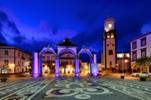
theuoblinguist.co.uk
12
A Lagoa das Sete Cidades
Praia dos Mosteiros
Ponta Delgada
ITALIANO Natale al sud di
Il Natale è ormai quasi alle porte; il periodo perfetto quindi per intraprendere un piccolo viaggio alla scoperta delle tradizioni e delle manifestazioni che da anni, decenni, animano il sud d’Italia. Ogni paese che si rispetti ha le sue tradizioni, e forse l’Italia è ben troppo famosa per il suo tradizionalismo e legame con le sue radici; quale momento migliore per esplorare il Bel paese se non durante la tradizione per eccellenza: il Natale?

Natale in Italia, significa molto, troppo forse: significa cibo, cultura, arte, musica, atmosfera; un mix perfetto per un’esperienza dalle mille sfaccettature.

Le festività in Italia, ed in questo caso parleremo del sud, o più specificamente di Napoli, hanno solo due parole chiavi: cibo e famiglia. Perché il cibo nella sua maestosità, riesce in eventi come questi a riunire insieme famiglie e generazioni, tutti avvolti dalla misteriosa magia che basicamente parlando si chiama amore e condivisione. Per poter passare il Natale a Napoli tre sono le regole fondamentali:
1.Mai alzarsi da tavola se non si è veramente pieni, e con questo termine mi riferisco alla sensazione di sentirsi davvero “scoppiare”.
2.Nessuno può lasciare la tavola senza una giustificazione valida e senza che siano davvero passate le sei ore.
3.Tutti fanno parte della famiglia: più grande è la tavola, più grande sarà il piacere di condividere. Da secoli ormai Napoli riveste il ruolo di una delle città fulcro per la tradizione natalizia. Ad ogni evento corrispondono una moltitudine di tradizioni che è “vietato” rompere.
“Natale con i tuoi e Pasqua con chi vuoi”. Questo è uno dei detti più importanti, per ricordare alle persone che è fondamentale avere piani o progetti, ma non per questo periodo dell’anno; in questo caso ci avrà già pensato la famiglia a fare progetti per te. Diverse sono le attrazioni e le manifestazioni, tradizioni antiche o eventi completamente nuovi. Come sostituzione del German Market di Birmingham, abbiamo in questo caso le famose “Luci d’Artista”: un fantastico tour di illuminazioni per incantare
Leni Durante
adulti e piccini. Il tour si può effettuare senza nessun tipo di costo nella città di Salerno, un’altra perla della regione Campania.
Sarebbe effimero soffermarsi sul Natale senza però parlare della tradizione presepiale, piccoli modelli di città presenti in ogni singola casa, che hanno un’importanza maggiore dell’albero di Natale.
Il presepe nasce nel ‘700, altro non è che una rappresentazione della nascita di Gesù. Esiste a Napoli una strada, celebre in questo caso per la creazione dei presepi tra i più belli del mondo. Secondo la tradizione, durante il periodo natalizio, come pausa dai grandi pranzi e dalle immense cene, ogni famiglia effettua un “giro” delle diverse chiese o punti importanti della città per poter assistere, giudicare e commentare i presepi. Si potrebbe chiamare pausa dal cibo ma, come sempre, ci sarà occasione per assaporare qualche dolce tipico: infatti vengono allestite diverse “bancarelle” in giro per la città, dove poter acquistare qualcosa da mangiare “al volo”.

Ritornando al tema del Presepe, da qualche anno a questa parte si è sviluppata una nuova arte, che viene chiamata Presepe Vivente, e come dice la parola è una vera e propria rappresentazione effettuata a dimensione reale da abitanti di piccoli villaggi. Ogni persona si veste con abiti tipici dell’epoca e vengono costruite temporaneamente strutture come richiamo alla città che vide la nascita di Cristo.
Sperando di aver lasciato in ognuno di voi un po’ di curiosità, vi invito vivamente a passare almeno una volta nella vita, le vacanze natalizie in Italia. Sarà un’esperienza senz’altro indimenticabile!
theuoblinguist.co.uk
13
中⽂
⼈的距離
似近似遠,是我對佛羅倫斯的第⼀個印象。
我住在離聖⺟百花⼤教堂 (Cattedrale di Santa Maria del Fiore)⼤約⼗分鐘遠的地⽅ ⼗分鐘 步⾏的距離。這裡的距離都以⼈的步伐計算,所 以我說似近似遠。
這四天各處奔⾛,似乎⾛了許多⾏程,但實際上 也不過辦好兩件事。好處是在迷路中,漸漸認識 了這個城市。友⼈說這裡的路徑容易混淆,因為 每條街都⻑的相似, 但對我⽽⾔恰好相反, 正是因為每條街都有
不同的⼩店,才似尋 寶般,是⼀次驚喜, ⼜是⼀次迷路。
奔⾛了兩趟移⺠署、 四趟郵局、⼀趟印刷 店、⼀趟⼈⽂與教育 院圖書館、三趟超市、 ⼀趟⼿機⾏。這幾個 點就像是我⼼中的驛 站⼀樣,從家中出發, 我總是在往返這些驛 站的路上。路上不時
注意到⾮常⼩型的⾞⼦,甚⾄連單⼈駕駛的貨⾞ 都有。台灣熱賣的 RA4 ⾞型是⾒不到的,這樣的 ⾞型在這裡似乎⽤處不⼤,因為很多距離是步⾏ 便可以抵達。客觀的原因是因為街道太窄,⼜都 是⽯磚路,不⽅便。義⼤利友⼈加註,佛羅倫斯 的街幾乎都是單⾏道,甚⾄有些街道只有居⺠才 可以⾏駛,如他來⾃別的城市的異客得去警局問 問警察,哪些街道是可以開⾞⾏駛的。
⽽騎腳踏⾞似乎是個好的選擇。雖然我要去的地 ⽅,以家為出發點,步⾏都可以在半⼩時內抵達, 但不斷往返,加總起來⾛的路程也是讓我疲憊不 堪。踩踏在乾淨卻有些參差的⽯道,我不禁想,
by Elizabeth Shih
也許 T 台上模特⾛的貓步就是啟發⾃這樣的路⾯, 因為參差,所以⾛的不快,⼜迫使臀部不得不⼀ 搖⼀擺,⾃覺婀娜。

疲憊之際,就忍不住慢下來了,但⼜停不得,還 得趕去郵局,因為剛才⾛錯間了。於是張望起來, 開始研究路上的街景,也悄悄記下路名。我更覺, 這座城市真的不適合開⾞來認識,因為⼀條街時 常只需三分鐘便會碰⾒⼀個⼗字路⼝。對於⾞⼦ 來說,連成線的點,或 許只能以廣場計算,⼜ 或許依然太近(但佛羅 倫斯的⾞型可能剛好)。
於是忍不住在忙到⼀個 段落後跑出來,穿越賣 ⽪製品的攤販 雖然 每⾛必然會遇到招攬, 但我真的很喜歡那熱鬧 感 抵達梅迪奇⼩聖 堂 (Cappella dei Principi) ,坐在階梯 上,吹著傍晚的涼⾵寫 下這篇。
我對友⼈說,這裡真是適合⼈住的地⽅,好像每 個⻆落都是以⼈為單位來計算。⾛的距離、等待 辦理事項的時⻑。也許以擁有科技的世界⽽⾔, 實在太慢,但其實轉⽽⼀想,這樣的速度於⼈, 剛剛好。遞交完居留證所需的所有證件後,剛巧 7:40,剛巧抵達家是⼋點,剛巧義⼤利室友們 都在這個時間點吃飯。
於是⼀起⽤了頓晚餐。 晚鐘之聲,似近似遠。
參考:
https://elizabethshih387379767.wordpress.com/ 2018/10/18/%E4%BA%BA%E7%9A%84%E8%B7%9D %E9%9B%A2/
theuoblinguist.co.uk
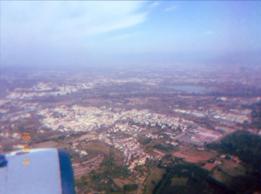
14
РУССКИЙ
Сочи - летняя столица России
Когда люди думают о России , им обычно приходит на ум снег , мороз , водка ну или медведи Хотя эти стереотипы, конечно, верны (как я могу подтвердить из своего собственного
опыта в Москве), в России есть одно место, которое является полной противоположностью
иным городам и бросает вызов всем стереотипам Среди россиян город Сочи называют жемчужиной Черного моря Вопреки названию у меня не было больших ожиданий, но многие россияне, с которыми я встречался в течение года, очень рекомендовали его посетитьособенно если спокойный отпуск предпочтительней Самый
протяженный город в России (около 100 миль) уникален тем, что вместо снега вы там найдете пляжи, вместо морозов - пальмы, а вместо водки - лучшее грузинское вино
После года учебы в столице, где зимой температура
падала ниже -20 и уровень
снега достигал колен, наша группа решила подарить себе
пляжный отдых перед нашим

возвращением в Великобританию Хотя
Россия , безусловно , не первое место, которое придет
вам на ум, при упоминании о
солнце , море и пляжах , преимущество самой большой страны в мире и заключается в том, что она может удивить. И так началось наше путешествие в Сочи, который находится в 1000 милях от Москвы Сочи не похож на другие русские города, в которых я бывал. Он скорее напомнит Вам испанский курорт, но с интересной историей, богатой культурой и хачапури Грузия находится
совсем рядом, ее даже можно увидеть
вдалеке. А это значит, что в этой части
России много грузинского вина и еды
Сталин проводил свой отпуск в этой
части страны и сегодня вы можете
посетить его дачу , она спрятана в
холмах и окрашена в странный зеленый цвет, чтобы скрыть ее от глаз шпионов В порту Сочи можно увидеть все богатство местного населения . В
по Thomas Gellender
Москве олигархи демонстрируют свое богатство через машины, на которых они разъезжают по городу А здесь яхты, пришвартованные в порту — это способ показать богатство. Именно из порта вы можете отправиться на лодке в Черное море и, если вам повезет, вы можете увидеть дельфинов Мы арендовали частную лодку, чтобы увидеть город с моря во всей красе во время заката . Только издалека можно увидеть природные красоты Сочи - современный город застроен красивыми отелями и небоскребами, прямо у подножия Кавказских гор. Мы также ныряли с лодки в море и любовались закатом –идеальное завершение нашего года в России Правительство потратило много денег в Сочи, и это легко увидеть. Во-первых, это было связано с зимними Олимпийскими играми 2014 года , которые были самыми дорогими в истории Сочи также принял матчи Чемпионата мира по футболу в 2018 году Мы были там за неделю или две до первого матча. Инфраструктура, отели и стадионы очень впечатляют и расположены прямо рядом с пляжем Когда вы находитесь в Сочи, отдыхая на пляже , трудно представить, как город смог принять зимние Олимпийские игры. Однако, всего в часе езды от города , в горах , расположен горнолыжный курорт "Роза Хутор". Мы провели день в этом удивительном месте, высоко над облаками. Кавказские горы, где расположен горнолыжный курорт, популярны среди россиян, и мы были тоже очень впечатлены Однако вскоре после нашего приезда начался сильный шторм, мы промокли и очень замерзли. Сочи предлагает все. Пляжи, солнце и море - для отдыха, история и культура из ее красочного советского прошлого, а горы, походы - для людей, которые хотят заниматься спортом. Это действительно самое уникальное место во всей России и туристы не будут разочарованы Если бы я мог провести год за границей, я бы выбрал для этого Сочи!

theuoblinguist.co.uk
15


































